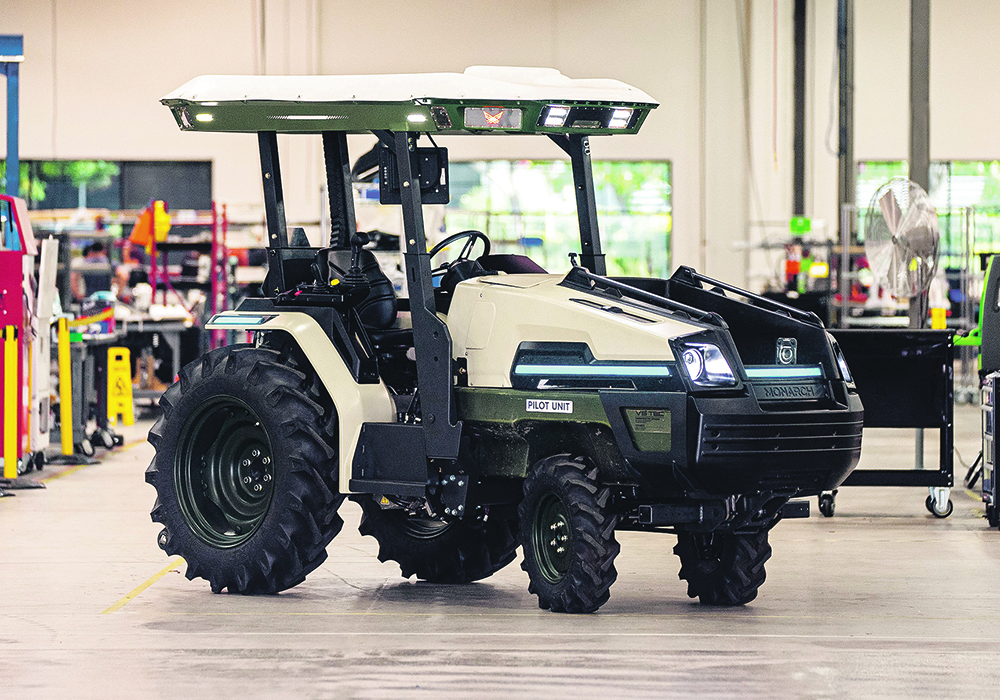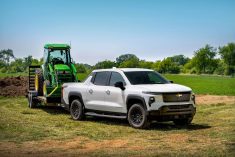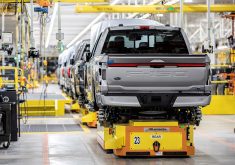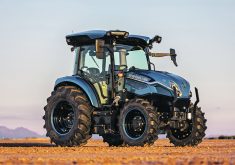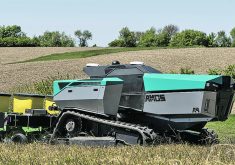The new machine is autonomous, so users can show it a job such as spraying or mowing and it will copy that task
Monarch Tractor has scaled up production of its autonomous electric tractor, which will soon roll out of the Foxconn plant in Lordstown, Ohio.
Mark Schwager, president and co-founder of Monarch Tractor, said the facility provided Foxconn a great opportunity because it wanted to get into EV manufacturing in North America.
Taiwan-based Foxconn is the world’s largest electronics maker and the Ohio facility is a former General Motors plant that until 2019 produced the Chevrolet Cruze. It was purchased and equipped by Lordstown Motors to produce electric trucks, then sold to Foxconn when Lordstown ran into financial troubles.
The failed firm “had built the team, many of whom came from General Motors with a ton of automotive experience, of about 650 people there in Ohio,” Schwager said. Foxconn hired hundreds of the people who have worked at the plant for years.
“They became the foundation on which we made the decision to locate our manufacturing operation with Foxconn. It was really the team and the assets there capable of producing our tractor.
“So, if we combine EV manufacturing, automotive manufacturing with the biggest name in electronics manufacturing, all of a sudden we have a very compelling opportunity for a company with unrivaled capabilities to bring our product to market,” Schwager said.
Monarch’s MK-V electric autonomous tractor is expected to start coming off the production line as early as next year.
“In the first year there will be thousands, and then we intend to scale into tens of thousands pretty quickly after that,” Schwager said.
Working with Foxconn will help address supply chain problems now faced by equipment manufacturers, he added.
“I saw this when I was with Tesla in the very early days. Many of the global OEM providers, the tier one manufacturers, did not give Tesla the time of day because we were only building 20,000 cars our first year. That’s not very compelling for many global tier one automotive manufacturers.
“That’s one of the reasons that Tesla vertically integrated a lot of their supply chain, is that the tier one landscape wasn’t all that helpful. With Foxconn, we can avoid all that vertical integration, we can get compelling pricing by using them and their purchasing power,” Schwager said.
Monarch’s California facility will continue to be used for design and validation, but the tractors will be built in Ohio.
Monarch’s MK-V electric autonomous tractor is a 40 horsepower equivalent platform that peaks at 70 h.p. and has approximately double the torque of an equivalent internal combustion engine, the company said.
“It’ll do anything a tractor does and that’s the idea, it’s a universal tool. So, you have a standard p.t.o., a standard three-point hitch. We do spraying, mowing, tilling, disking, cultivation, hauling. You name it. If a tractor does it, we do it,” Schwager said.
“The farmer can use their existing drivers to drive it, or train it, and all of their existing implements can be used with it.”
The tractor has an operator’s station so transporting or moving it in tight spaces can be done by a driver.

Its farm management system can be used to give it a task or users can show the tractor the job they want it to do, such as mowing, spraying or tilling. The tractor will copy the job the operator did, including lifting or engaging the implements.
“We have a number of multi-layer stacks of sensors that allow for that. Our sensor of choice is vision. We don’t have any lidar or radar on our tractor, which would make it much more expensive. So, we do all of this with cameras and GPS,” Schwager said.
The tractor can run eight to 10 hours on a single charge and there is an option for a second battery.
“Our battery is swappable. So, if a farmer requires 24/7 operations, they can buy an extra battery and a swapping cart, which can be done by a single person in seven minutes or less on uneven ground in the middle of the field.”
The battery can be charged in four to five hours with a 220-volt electrical outlet.
“We don’t want the farmers to replace all their electrical infrastructure and deal with the power companies and all that stuff. We want them to use what they’ve got.
“We charge at 0.2 C. That makes it the ideal, gentle environment for the battery that prevents degradation. So, for that reason, it’s easy to see a battery last 2,000 cycles, 2,000 full depth of discharge cycles,” Schwager said.
“If you equate that to the run-of-the-mill operation, that’s 10 hours on a single cycle. That means that you get 20,000 hours. A typical tractor of this class is used 1,000 hours per year so that takes us to about 20 years.”
More research is needed to see how the battery will stand up to Canadian winters.
The Monarch MK-V is being used in orchards, vineyards and dairy farms while the company focuses on markets in California, Oregon and Washington.
Schwager said the licensing agreement Monarch signed with CNH Industrial at the end of last year provides access to the CNH dealer network.
Both CNH and Trimble invested in the development of Monarch Tractor.


